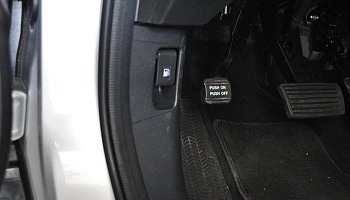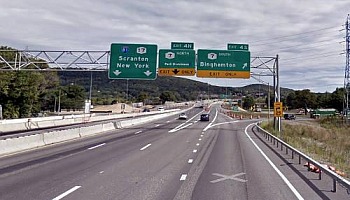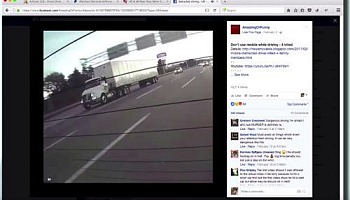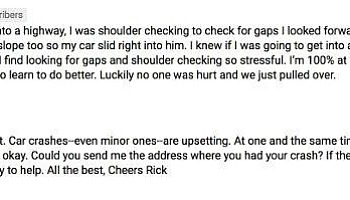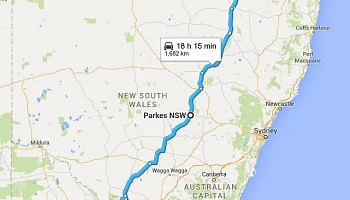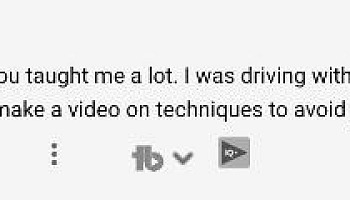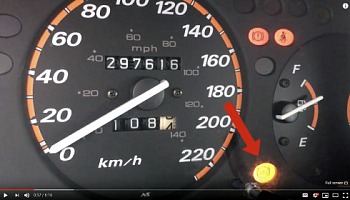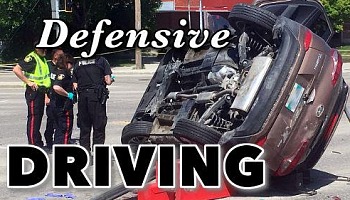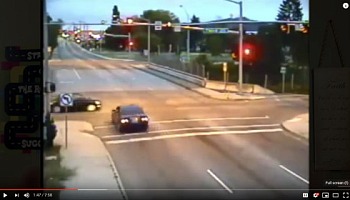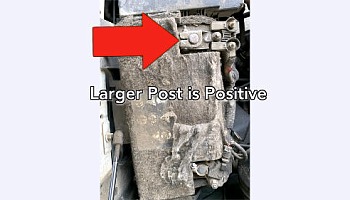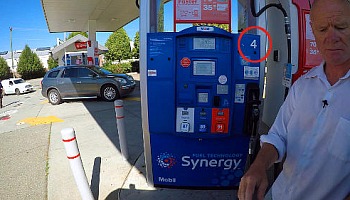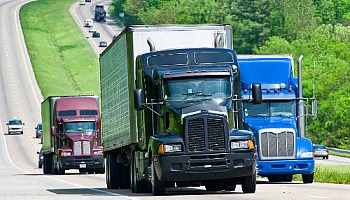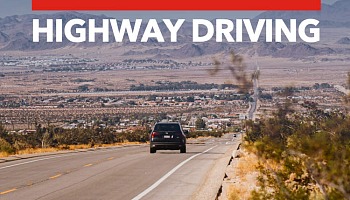Learn to park, turn & manoeuvre your SUV.
How to Drive a SUV :: Techniques & Strategies
Closed Caption
Updated May 2022
Introduction
Hi, there smart drivers, Rick with Smart Drive Test talking to you today about how to drive an SUV or a larger vehicle.
We'll give you tips and strategies for that.
Stick around, we'll be right back with that information.
Prologue
Hi, there, smart drivers, welcome back.
Talking to you today about how to drive an SUV or drive a larger vehicle.

Now, just before we get started here, if you're new to Smart Drive Test, Smart Drive Test helps new drivers get a license, veteran drivers to remain crash free, and CDL drivers to start a career as a truck or bus driver.
So, if you're new here, consider subscribing...just about there.
As well, hit that bell that way you'll get instant notification when I get the videos up for you.
Today, I'm working with Bannister Honda here in Vernon, family business, family values.
And, they have provided a Honda Pilot which is one of their biggest SUV's.
It's actually an eight passenger vehicle and it's going to be really good for showing you some of the exercises that you can do to get used to a larger vehicle.
So, we're going to hook up the cameras in the car and we're going to show you how to do that and get used to and familiar with figuring out where a larger vehicle is in space and place.
2X4 Driving Exercise
All right, so two by four exercise.
We're in the vehicle here and we're going to do the driver's side and we're going to go around and then, we're going to do the passenger side.
And then, we're going to do it in reverse.
(board clattering)
Oh, we got about half way on the front there.
On the back, we missed the back.
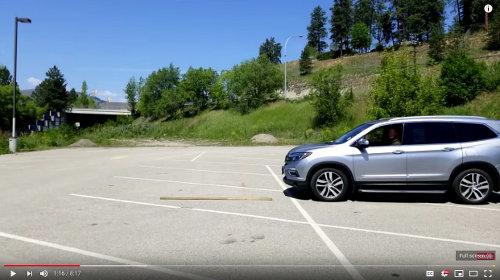
Oh, and we have the back up camera, but I don't think I can use the back up camera.
I think we can just use the mirror, did I get it, I think I did.
Yep, get the front? It's a little harder because it's, there we go.
We got it on.
There we go, 'kay, so, we'll do the driver's side, backing up.
There we go, so I can't do this without looking in the mirrors.
Working with Pylons - Front & Back
So, there you go, there's the first thing you want to do.

So, you just want to move up and drive to the pylon and nice and easy, gentle and tap the pylon that way you're going to figure out where your vehicle is in space and place.

Right there, reverse, and then, for this one in the back here, when you're reversing, just, reverse camera actually is really helpful here because you can see, (beeping) right there and then, what we're going to do is we're going to go beside the pylon here in reverse.
Working with Pylons - Passenger & Driver's Side
And, see how close you can get on the passenger side.
And, again, looking in the mirror is going to help you out because the wing mirror is your farthest point away from the pylon, so right there.
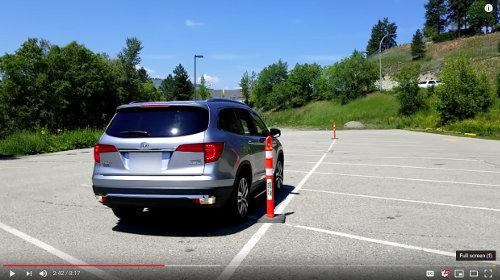
Okay, so backing up along the pylon.
And, again, you want to be looking in the mirror.
And, the mirror's going to be your best guide for seeing it.
And then, the driver side's going to be fairly easy because this is your smallest blind area on this side here.
(beeping)
And again, you've got the signal warning you that you're within close proximity to something and it's on the outside of the wing mirror, so it makes very easy.
And, for me, it's the mirrors.
I have to look in the wing mirrors.
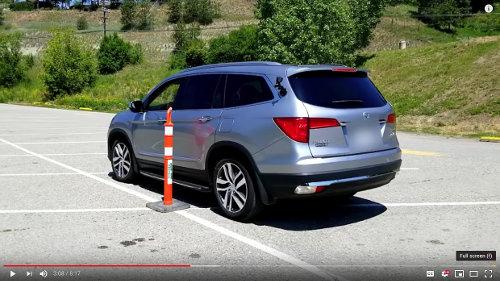
You can turn around if you wanted to, but for me I find using the mirrors fairly simple.
'Kay, and it's good practice for you to get used to using the mirrors.
And again, you want it right on the outside of the mirror there.
And that, that's your widest part of your vehicle. (beeping)
Parking in Lot
All right, so probably the easiest thing to do first, is to park in beside another car where there aren't too many cars around.
There's one right here, so we'll just do that.
And then, you can get a sense.
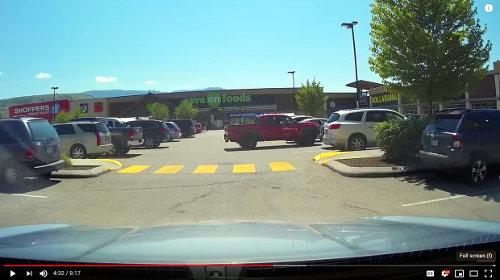
You can see the steering as well.
Pull it back to you and you're straight.
And, you're beside the vehicle, that simple.
Try that. (upbeat music)
Second Park
I'm going to park here because there's two spaces, so there's lots of room to get in beside, in between these two vehicles here.
And, you can see because we have a bigger vehicle, we're not going to be in the space, so, but we're straight, vehicle parked, done, reverse.
All right, 360° degree scan, nobody coming in the parking lot, check the back-up camera, always helpful.
Drive and proceed.
And, now, we'll go for a drive.
This is the last step of learning how to drive a bigger vehicle.
Driving Through Parking Lot
Wait for this nice person.
And, if you're preparing for a road test, make sure you got two hands on the steering wheel.
If you're not preparing for a road test, and you're working on driving a larger vehicle after you get your license then two hands on the steering wheel doesn't matter quite so much.
(upbeat music)
Moving Over For Pedestrian - Shoulder Check
A pedestrian, a little bit of space there, we just move over to the left.
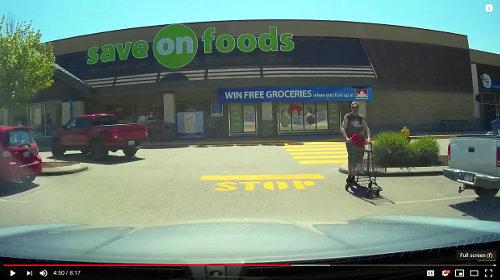
Make sure you shoulder check before you move the vehicle laterally, even though this wonderful Pilot has all the bells and whistles and tells you where people are in the world.
Try not to run into the big Ford as we're getting out of the parking lot.
(upbeat music)
Moving Through A 'T' Intersection
Edge forward so we can see.
Make sure that people are committed to the turn before you pull out in front of them.
Steering tires are moving, so now we can go.
(upbeat music) And again, for large vehicle, the same principle applies when you're pulling up into traffic.
Defensive Posturing - Stopping In Traffic
Stop, so you can see the tires of the vehicle in front of you making clear contact with the pavement.
That leaves about one vehicle length between you and the vehicle in front and it's really good defensive posturing.

Put my signal back on because it canceled there on the way up.
And, looking down the road as far as you can, I'll put the video up in the corner for you on centering your vehicle in the lane if that's what you're having trouble with.
And, you can have a look at that because that'll help you out.
(upbeat music)
Going Around Corners In a Larger Vehicle
Again, when you're going around corners, you want to stay to the outside of the curve.
So, on that right-hand turn there, you want to stay out to the left that way you're going to get your bigger vehicle around the corner.
You're not going to run the wheels up on the curb and those types of things.
(upbeat music)
Get a good following distance, you're scanning the intersection.
You're staying out to the left here because that's your smallest blind area on your vehicle as opposed to the passenger side which is your biggest blind area.
(upbeat music)
Congested Urban Areas
This area down here where you're going to get into congested urban areas is probably where you're going to have the biggest challenges in terms of driving a larger vehicle an SUV or what not.
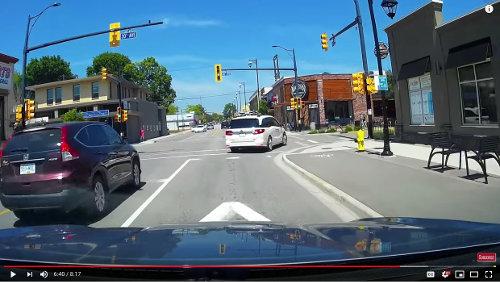
So, you just stick to all your basics of shoulder checking, scanning properly, and, again, looking far down the road, so you can keep the vehicle centered in the lane.
Quick Check for Centring Vehicle in Lane
So, when you're driving straight down the road in larger vehicle most of the time that fog line, the white solid line, on your right side of the vehicle should be in the center of the hood.

If that's in the center of the hood, that's one of the quick checks you can do to make sure that your large vehicle is centered in the lane while you're driving in straight, in a forward motion.
Conclusion
So, those are some tips and strategies for driving a larger vehicle.
Do those exercises and you'll learn where the vehicle is in space and place.
If you don't have a great deal of experience in different vehicles and those types of things, work with the pylons, work with the two by four and that will help you out.
And, remember, the wing mirrors are the farthest points on the right and left of the vehicle, so if you're outside of those wing mirrors, you're going to miss whatever you're driving past.
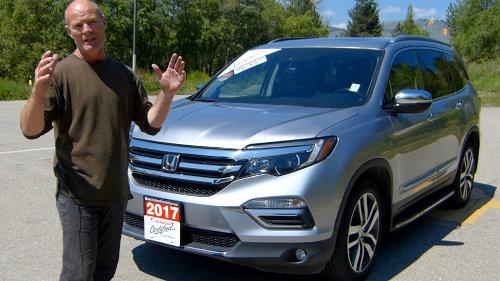
And, it's great on this Pilot because it's got all kinds of sensors and what not that will help you out in terms of staying safe on the roadway.
And, I'd like to thank Bannister Honda, family business, family values and allowing me to use this great car, this awesome Pilot to shoot this video.
For another video, click here.
To subscribe, click here and all the best.
And remember pick the best answer, not necessarily the right answer.
Have a great day, bye now.
Out-take & Blooper
Now, we got to come up with some cheesy music.
I'll have to go on YouTube and find some.
- [Charline] Always good for ad-libbing (laughs) -
It's kind of like the Spiderman.
- [Charline] Right.
- The one where he's in the elevator and the guys asking about his spandex.
(Charline singing tune) (laughs)

